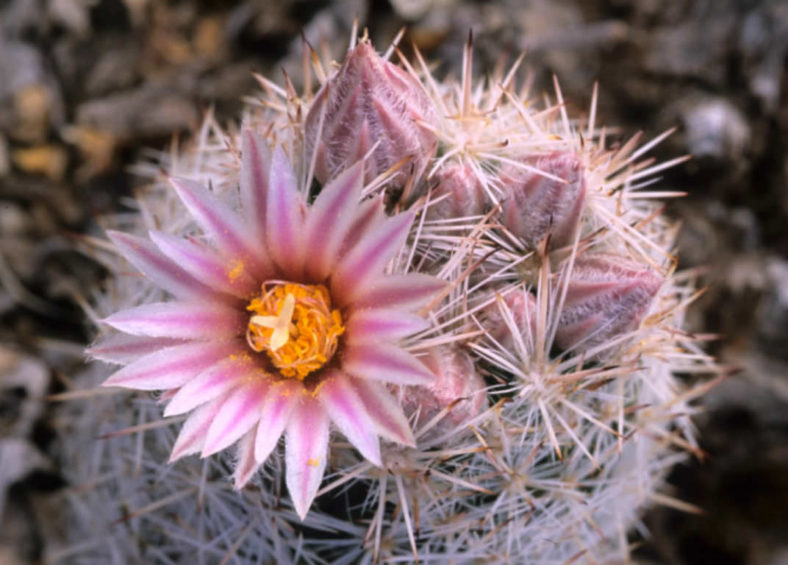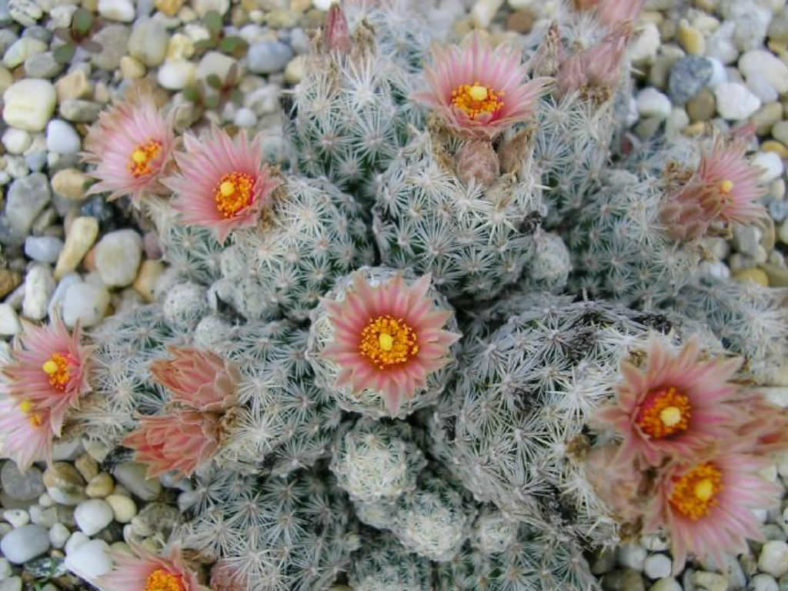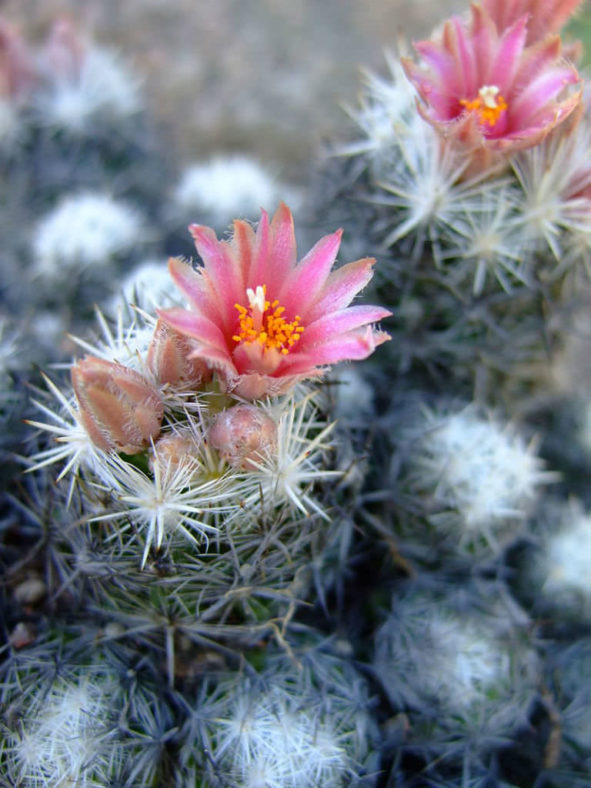Scientific Name
Escobaria sneedii Britton & Rose
Common Name(s)
Carpet Foxtail Cactus, Sneed's Cory Cactus, Sneed's Escobaria, Sneed's Pincushion, Sneed's Pincushion Cactus
Synonym(s)
Coryphantha sneedii, Coryphantha vivipara var. sneedii, Mammillaria sneedii, Pelecyphora sneedii, Pelecyphora sneedii subsp. sneedii
Scientific Classification
Family: Cactaceae
Subfamily: Cactoideae
Tribe: Cacteae
Genus: Escobaria
Etymology
The specific epithet "sneedii" (pronounced "SNEED-ee-eye") honors J.R. Sneed, who collected this species first in February of 1921, and again in June of the same year when it was flowering.
Origin
Escobaria sneedii is endemic to the Chihuahuan Desert. It occurs in scattered locations in New Mexico and Texas in the United States, and the Chihuahuan desert scrub in Mexico.
Description
Escobaria sneedii is a small cactus that forms large clumps of green, usually stiff and erect stems obscured by white spines. The stems are spheric at first, later cylindrical or club-shaped and can grow up to 10.8 inches (27 cm) long and 4 inches (10 cm) in diameter. The tubercles are stiff, cone-shaped, and can measure 0.5 inches (1.2 cm) in length. Each areole bears 31 to 96 spines, all bright, snowy white or pinkish when young.
The flowers can be white, cream, pale tan, greenish-white, or pale rose-pink and may have a darker mid-stripe of almost any color. They are funnel-shaped, appear at the top of the stems in spring, and can reach a length of 1.1 inches (2.8 cm) and a diameter of 1 inch (2.5 cm). The fruits are generally red or green, often with a hint of other colors. The fruits are red or green, juicy when fresh, and have bright reddish-brown or brownish-orange seeds. They are spherical, club-shaped, or cylindrical, and can grow 0.4 inches (2 cm) long and 0.3 inches (0.8 cm) in diameter.

Hardiness
USDA hardiness zones 8a to 11b: from 10°F (-12.2°C) to 50°F (10°C).
How to Grow and Care
Escobarias are susceptible to rot and require well-drained soil without excess water or stagnation. It has been observed that the plants also suffer from environmental humidity, which should preferably remain very low (30% to 50%). Avoid watering during the winter, when the plant is dormant. Watering Escobaria in cold environmental conditions will almost certainly lead to the death of the plant. The plants, whose growth is typically quite slow, perceive a significant temperature difference between night and day in the growing season.
The experienced grower knows well the difficulties of survival of the members of this genus, which is certainly not one of the easiest to grow. The seed germination rate is lower than that of other genera, and other propagation methods, such as offsets or cuttings, are preferable.
Learn more at How to Grow and Care for Escobaria.
Links
- Back to genus Escobaria
- Succupedia: Browse succulents by Scientific Name, Common Name, Genus, Family, USDA Hardiness Zone, Origin, or cacti by Genus
Photo Gallery
Click on a photo to see a larger version.

